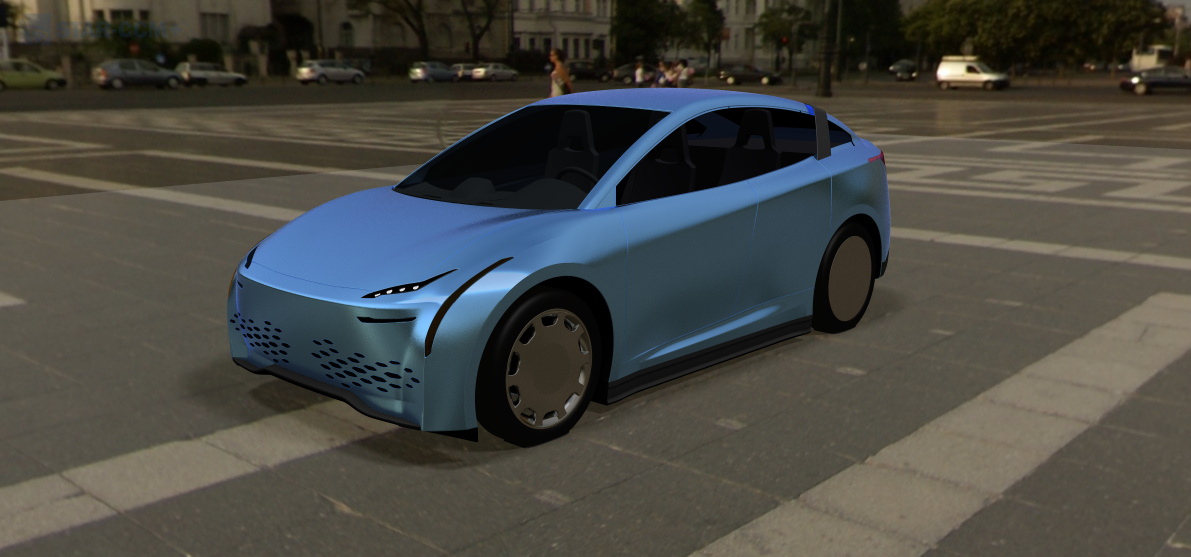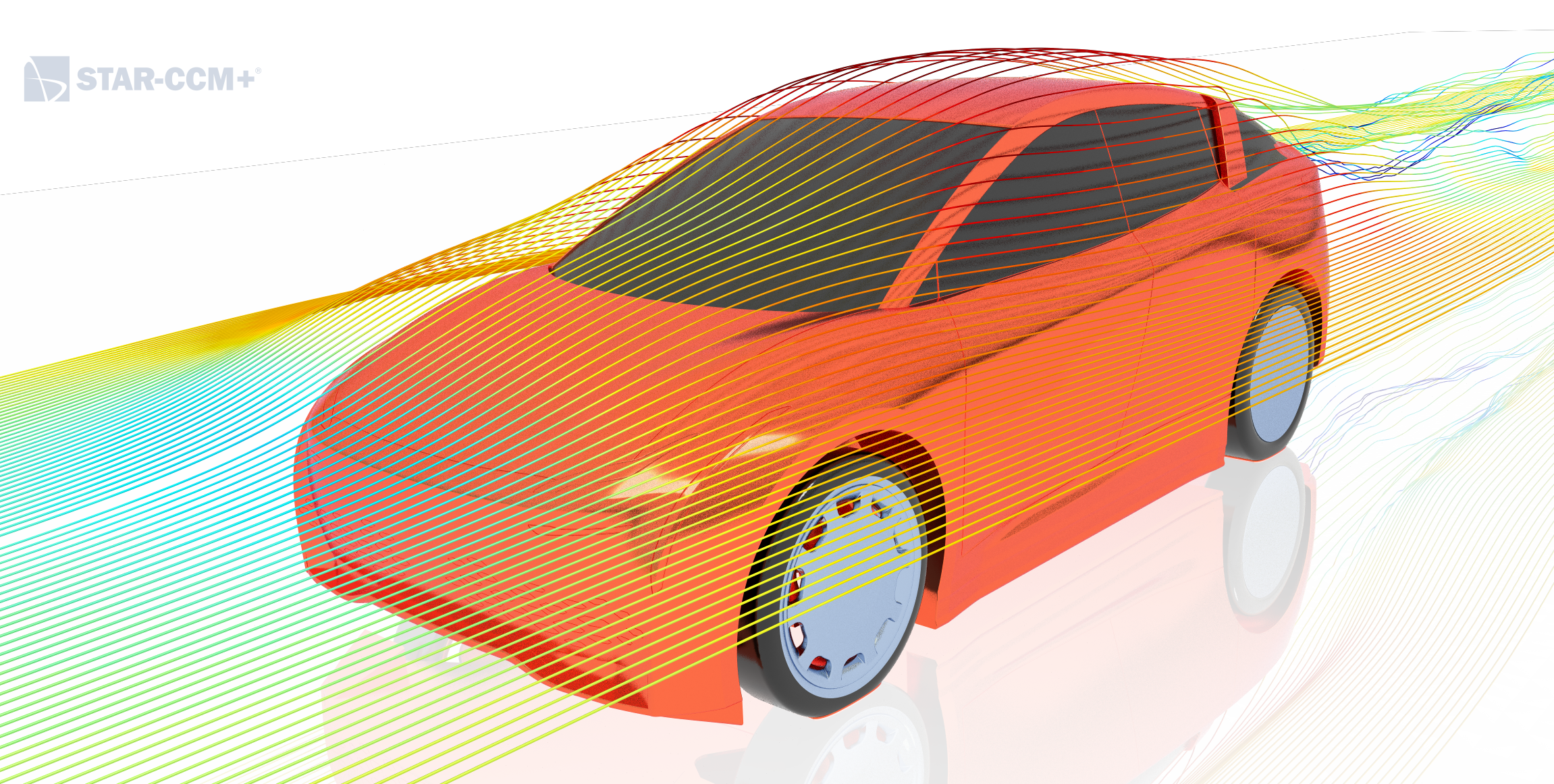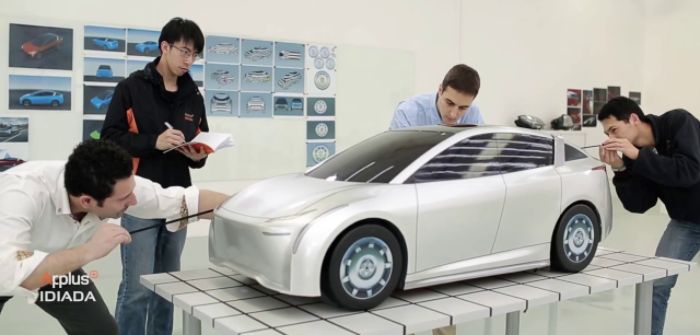In a recent case study, engineers at Applus IDIADA used Siemens PLM Software’s Simcenter STAR-CCM+ package to refine the aerodynamics of a compact electric SUV, the Cronuz, which is said to have a range of 250 miles.
Applus IDIADA believes it has designed the most aerodynamic compact electric SUV yet, delivering a 0.19 drag coefficient and a driving range of 250 miles (400km).
A recent Tesla study notes that a 10% improvement in aerodynamic performance gives a 5-8% increase in range for EVs. At speeds over 130km/h (78mph), around 80% of the power is used to overcome aerodynamic losses. Clearly, better aerodynamics provide increased range. Wind resistance is the major contributor for EV performance losses, meaning aerodynamic improvement is twice as important for EVs compared to ICEs.
The most aerodynamic cars currently on the market – including the Tesla Model S, Mercedes CLA, BMW 5 Series and Audi A4 – all have Cds hovering between 0.22 and 0.24, depending on engine types and features.
Can an electric vehicle design have a Cd lower than 0.2 without sacrificing form and functionality? The answer from Applus IDIADA, is a resounding yes. Applus IDIADA recently unveiled the Cronuz project, an electric compact SUV concept with a Cd of 0.19. Designed with a battery pack of 200-liters and weighing 1,500kg, the four-seater C class SUV runs on two electric motors and is designed for a range of 250 miles.
“As far as we know, this is the first concept electric SUV on the market with a Cd below 0.2,” says Enric Aramburu, fluids engineering product manager at Applus Idiada.
The design was a result of cooperation between Applus IDIADA’s designers and aerodynamicists. The designers produced an initial surface attuned to EV design sensibilities, an aesthetically pleasing style, a minimalist aerodynamic design and a streamlined SUV type body.
The aerodynamicists then used a virtual wind tunnel with Simcenter STAR-CCM+, a computational fluid dynamics (CFD) tool part of the Simcenter portfolio from Siemens PLM Software, for analysis of the vehicle aerodynamic performance using numerical simulation.
Applus IDIADA simulated more than 600 design proposals over six months, incorporating drag-reducing concepts into each design. With Simcenter STAR-CCM+ simulations, the final optimized design delivered a drag coefficient of 0.17 in free air without attempting to model the wind tunnel and in steady-state conditions. The final assessment of the wind tunnel testing provided a Cd of 0.19, confirming the simulate-innovate-test approach and the Cronuz’s place as the most aerodynamic concept EV compact SUV.
Aramburu adds, “We knew from Simcenter STAR-CCM+ that we could achieve a record drag value even before building a prototype.”
Two innovative features on the Cronuz are key in driving down the drag – active systems and an optimized wheelhouse/underbody design.
Active aerodynamic systems refer to parts of a car moving in-operation to positively affect the airflow around the car. These systems are the next breakthrough in achieving fuel efficiency, reduced drag and increased downforce in the automotive industry.
They ensure optimum aerodynamics for every driving situation, be it low drag in economy mode or high downforce in sport mode, while maintaining the design sensibilities and styling requirements from the designers.
Cronuz features active systems for the front fairing and an active rocker, which are hidden at low speed and while parking. At high speeds or on-demand, the active systems are deployed, changing the airflow around the car (and even the car’s shape) to stay attached from front to rear while minimizing turbulence around the wheel well, one of the key drag contributors.
Forty percent of aerodynamic losses come from wheelhouse and underbody areas, offering significant room for optimization. An optimized rim design, low undercarriage (deployed after 80mph/ 128km/h) and an almost completely closed wheelhouse from underneath minimize wheelhouse turbulence and ensure attached flow from front to rear – a major driver for drag reduction.
Steady-state simulations in Simcenter STAR-CCM+ showed the active systems reducing drag by 20 counts (one drag count equals a Cd of 0.001). Even accounting for wind tunnel mounts and unsteadiness, which were not included in the simulations, this confirmed the huge reduction in drag from active systems. Wind tunnel tests eventually showed a 14-count reduction.
These innovations were possible by iterating various designs for the active systems, rims and underbody wheelhouse covers in Simcenter STAR-CCM+ to find the best performing combination. These design improvements reduced drag by 55 drag counts prior to building the only prototype.
“I can’t imagine conducting a project like this without Simcenter STAR-CCM+,” says Aramburu. “By building a digital twin, we were able to try out various design possibilities with simulation early in the process. Simulation is the key to design innovation.”
The aerodynamic innovations in the Cronuz stand to help both major original equipment manufacturers (OEMs) and EV startups in reducing drag and increasing range. Such shape-shifting cars with active systems, which have become prominent in the last decade, seem to be the future of automotive aerodynamics.




